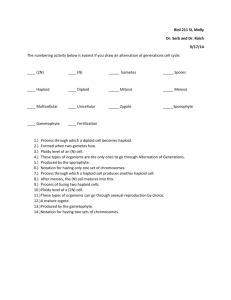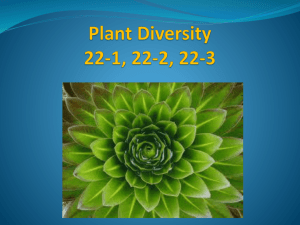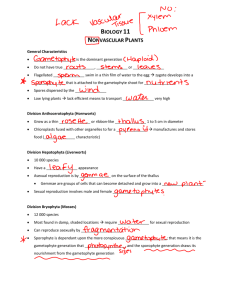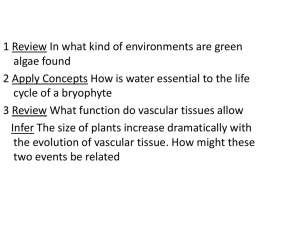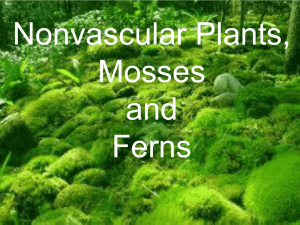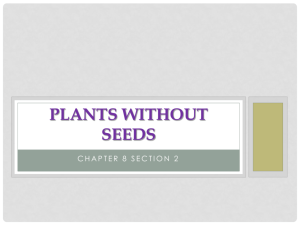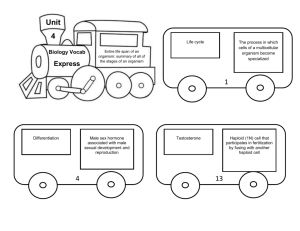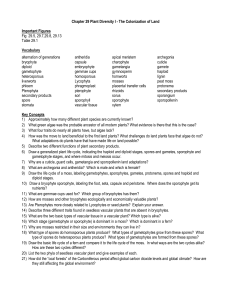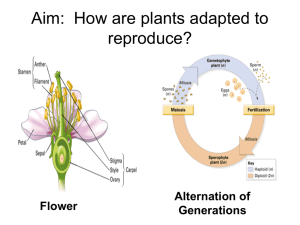Plants - nowyoudothemath
advertisement
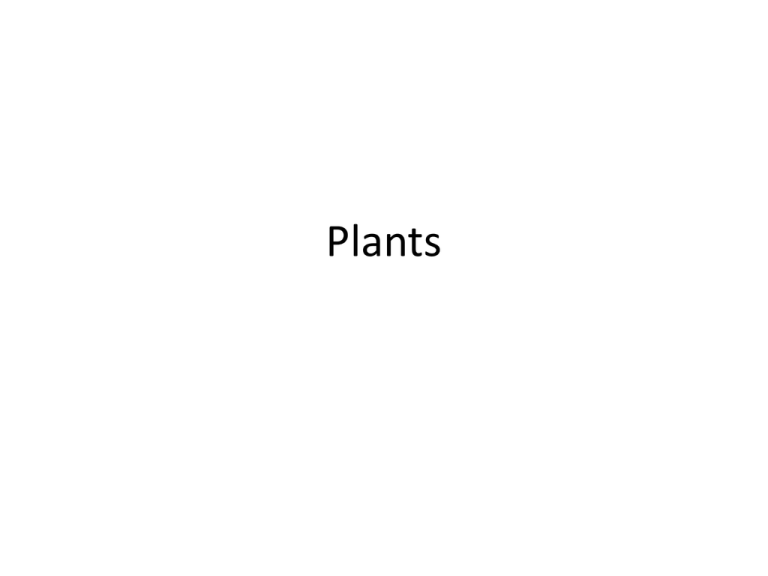
Plants • Plants evolved about 500 million years ago from simple green algae that lived in the ocean. • All plants are autotrophic and some, like the famous Venus fly-trap, can also be heterotrophic. • All plants are eukaryotic and multicellular. • Their cells contain a nucleus and membrane bound organelles, specifically chloroplasts. • In addition, plant cells also contain a cell wall composed of cellulose. • The cell wall provides protection, structural support and helps to regulate water pressure within the plant cell. • The diagram on the right illustrates the components of a plant cell. • You will notice the presence of vacuoles which help to store the materials needed for photosynthesis. • Animal cells and plant cells contain most of the same organelles, but it is important that you note the differences. • Currently there are over 350 000 species of plants. • They include mosses, ferns, conifers and flowering plants. • Most plants live on land and can withstand a wide variety of climates. • Cacti live in arid, dry areas whereas mosses need to be in moist environments to survive. Evolution of Plants • The transition from a mainly aquatic environment to a terrestrial planet revolved around plants. • The ability of plants to photosynthesize and sustain themselves is a key factor in the evolutionary process. • Plants provided nutrition to other organisms and they helped form soil. • Taller trees helped to reduce temperatures by providing shade and therefore promoted the growth of other organisms previously affected by hot and dry conditions. • Trees and shrubs also provided habitats for many other organisms. • Plants evolved during this process. • Surviving in an aquatic environment is much different than living in a terrestrial environment. • In water, plants were constantly provided with water and minerals and were able to easily release waste products. • However, on land plants had to either live in moist environments or develop a method that allowed them to absorb and transport materials within their cells. • They would have to develop specialized cells to carry out tasks and provide structural support. • So, of course plants evolved too. Classification • Plants are classified based on the presence or absence of vascular tissue. • Vascular tissue can be compared to arteries and veins. • It is a network of specialized cells that allows plants to transport water, minerals and sugar throughout the plant. • You will learn about the characteristics of nonvascular plants and vascular plants. A quick word from Hank • https://www.youtube.com/watch?v=iWaX97p 6y9U&list=PL3EED4C1D684D3ADF&index=36 Nonvascular Plants • Mosses, liverworts and hornworts are examples of bryophytes. • Bryophytes are nonvascular plants that lack specialized transportation cells called xylem and phloem. • In addition, they do not have distinct roots, stems or leaves. • As long as the environment is moist they can grow on soil, dead trees, rocks and even buildings. However, they cannot grow very tall. Reproduction of Nonvascular Plants • Bryophytes can reproduce asexually through vegetative reproduction. • This occurs when a part of the plant breaks off and a new identical plant develops. • To reproduce sexually, these plants require water for the male reproductive cell to swim to the female reproductive organ. • Unlike animal cells that produce haploid sex cells to produce a zygote, plant cells alternate the type of cells they produce. • In one generation, a plant produces haploid cells called spores which develop into a haploid plant. • The haploid plant, called a gametophyte, produces and releases haploid gametes. • When two of these gametes fuse together, a zygote forms. • The zygote, which is diploid, develops into a sporophyte plant. • The sporophyte plant then releases haploid spores and the cycle continues. • The image on the right shows two capsules that contain many spores. Moss reproduction • Each of the spores can develop into a new plant. Homework • Watch the two videos: • https://www.youtube.com/watch?v=iWaX97p 6y9U&list=PL3EED4C1D684D3ADF&index=36 • Moss reproduction • And can you bring in a device that is capable of reading a pdf tomorrow please.
